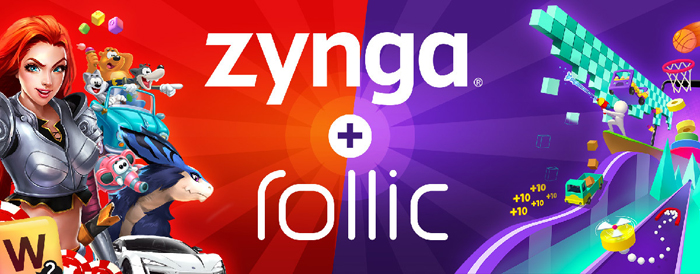Hypercasual dominated the mobile gaming charts even before the pandemic.
Installs of hypercasual games, characterized by extremely lightweight, free-to-play mobile titles, more than doubled between December 2019 and March of this year, according to joint research from Adjust and Unity. Once lockdowns started, the growth accelerated, with play sessions up by 72% in March.
But margins are razor thin in hypercasual gaming, and with IDFA restrictions coming next month in iOS 14, CPMs are set to nose dive.
Yet on Wednesday, Zynga said it intends to acquire Rollic Games, a hypercasual gaming studio based in Istanbul with more than 250 million downloads collectively across its portfolio.
Zynga will acquire 80% of the company for $168 million in cash at a $210 million implied valuation. The deal is expected to close on Oct. 1, and Zynga will purchase the rest of Rollic in installments over the next three years. This is Zynga’s second acquisition in as many months. It bought Peak Games, the maker of Toy Blast and Toon Blast, for $1.8 billion in June.
It’s great to have a scaled portfolio of gaming titles – but what about monetization in an environment where tracking is hobbled on iOS and performance can only be measured at the campaign level, rather than the user level?
The lifetime user value of a hypercasual player is often less than three weeks, which means they have to keep their customer acquisition costs very low and then monetize their users, usually through ads, as quickly as possible before players invariably churn.
As Eric Seufert, a media strategist, former Rovio exec and editor of Mobile Dev Memo, noted on Twitter in mid-July, Apple’s IDFA changes create “a massive handicap” for hypercasual. Without device graphs, he wrote, hypercasual CPMs plummet.
But during Zynga’s second quarter earnings call Wednesday evening, CEO Frank Gibeau claimed that “the way Rollic acquires players does not rely on IDFA.”
In other words, Rollic’s method is to chase extremely low-cost CPIs by running user acquisition campaigns against broad, largely untargeted audiences. It’s not unlike the age and demo targeting that advertisers do on traditional linear TV, said Bernard Kim, Zynga’s president of publishing.
When someone sees an ad for Go Knots 3D, where the object is simply to untangle knots, they know what they’re getting, Kim said.
“Anyone can jump right in and there’s no learning curve, so it’s more of a mass marketing play than the very targeted campaigns we do for our other games, which are more whale-driven,” Kim said.
Whales are players that spend a lot of money on in-app purchases in a game, and are responsible for the majority of revenue for many casual mobile game titles, such as Zynga’s own Empires & Puzzles.
Part of the rationale in acquiring Rollic is to learn from the studio’s seeming ability to drive efficient installs at super-low CPIs, and then to apply those tactics to Zynga’s other franchises.
“When it comes to IDFA, there are a lot of unknowns,” Kim said. “But we see the way they can bring players into their network as something that can be a major learning for the total company.”















